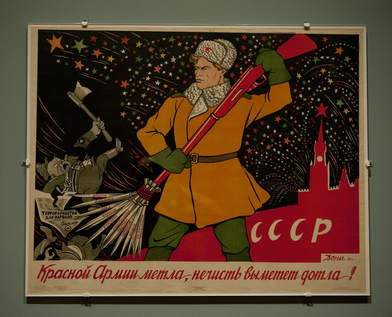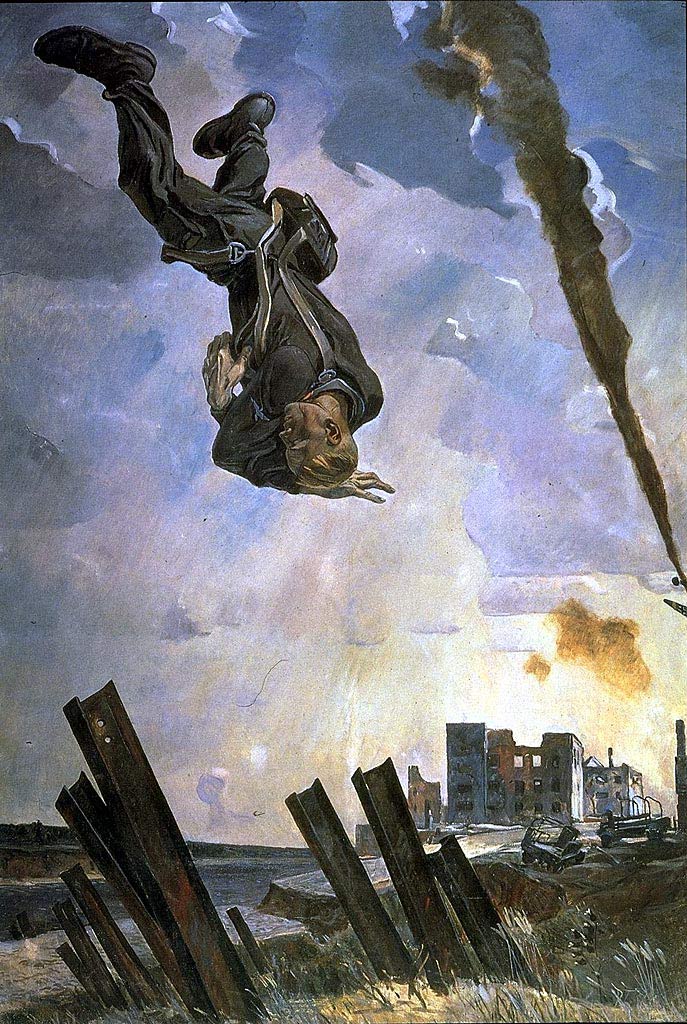Delirium. Soviet Union. It’s what is not us, not only separate from us but alien,and so different that to confuse with us is to flirt with madness, like a visceral fear of mad love, a temporary insanity that may have enduring and traumatic consequences. The mystery of the Soviet union, if not about tradition was ostensibly about creating a whole new world, a sort of messianic redemption based on the utopia of humanism although even a cursory glance at the warped personalities of Trotsky, Lenin and Stalin would leave some doubt. Humanly, it is difficult to accept complete separation, to quarantine this peculiar world and this unfathomable people, so the door opener to this enigmatic society remains the non-human aspect in a valiant subjective effort to connect a relational gap hard-wired into the separateness that approaches what could be termed the essence of objectivity.
This is what David Satter has attempted to achieve in his documentary film Age of Delirium, where time and violence collide with a broken ideology and its social experiment to re-orient human nature, all backed up with the moral suasion of brute force. At the same time, the Soviet illusory universe is a cautionary tale of of western dabbling at the edge of the moral shadowland itself, our own make-believe, the in-between of nothing very much alive, yet nothing totally decaying either, a kind of glazed fruit syndrome that perpetuates its own artificial world of eternal youth, optimism, a new tomorrow with everything as neat, new and void as a new shopping plaza equally adept at chipping away at subjective nuance, what Libertarians have termed the creeping fascism in an oxymoronic world of the radically banal.

—“The Red Army Broom Will Sweep Away The Scum,” 1943 by artist Viktor Deni, on display with “Windows on the War, Soviet TASS Posters at Home and Abroad, 1941-1945,” —click image for source…
The Soviet Union was the first nation in history to have atheism as its founding ethos. The State became the church and it wasn’t a long leap to see how a Weimar Germany could implode and be “re-emancipated” in the same mould or political template of man as deity and center of the universe and Satter in Age of Delirium attacks the nature of fictitious realities and how they can continue to hold sway despite the cost of tragic consequences by the hand of a social structure held together by fear and force.

—The vast army of sympathetic critics of the Soviet regime have done more to enhance its prestige than all its paid agitators and subsidised publications put together. By being sympathetic they have accepted its premises; and once the premises are accepted, criticism becomes irrelevant. As a Jew in the Soviet Foreign Office said to me once, with a wink, “Those that are not against us are for us.” I quite agreed. It is no more possible to describe the Dictatorship of the Proletariat dispassionately than to describe a mad bull rushing round a field dispassionately. The moment you become dispassionate you automatically make the false assumption that the bull is not mad, and thereby vitiate anything further you may have to say about the matter. Of all the accounts of the Soviet regime that have been written and spoken, the falsest—the ones least related to the facts—are by people who affect to have no prejudices or convictions either way.
…
It was as though the Salvation Army had turned out with band and banners in honour of some ferocious tribal deity, or as though the organ of a vegetarian society had issued a passionate plea for cannibalism.—Malcolm Muggeridge. 1934—click image for source…
The American way has its own mechanisms of distracting us from the dismal reality of social and economic injustice. Like Warhol saying even the richest and poorest man can drink the same Coke or eat eat the same soup! But the Soviet system was an entirely different masterwork of indifference, the State’s indifference and abhorrance of being infected by society’s inner reality except at rare and completely unconvincing moments where the human being remained a trivial and token presence devoid of substance and individuality. Satter’s film, despite some flaws, reflects the impersonal essence and unyielding alienness lost and abandoned in an artificial environment. The command and control system, top-down, theory X meant the system had to be eventually devoured by its own artificiality, a grotesque glamour inwardly dead acting out feelings they did not possess.
ADDENDUM:
(see link at end)…One of Satter’s most salient points is that the Soviet Union was unique in that it was “the first state in history to be based explicitly on atheism.” With its commitment to godlessness, Satter argues, the Soviet elite also embraced an ideological surrogate, namely Marxism-Leninism, that would replace religious piety and devotion with a blind confidence in science, dialectical materialism, and above all “single-mindedness, amorality, and blind fanaticism.” Even before his narrative begins in earnest, the author links the Soviet Union’s demise with its leaders’ slavish devotion to ideas rather than morals.It is sometimes said that the extremes of left and right ultimately meet. Far left and far right both despise the bourgeois class and its preferred form of democratic government. They both despise this class for the smallness of its outlook and its ambition. Bourgeois weaknesses and hypocrisies provide the fodder for both movements out to destroy this class from both ends. They both claim The Answer to the complexities of life and history. Both are out to rationalize and simplify the wretched mess of human life. Both declare “We have been naught, we shall be all!”

—By 1934 all other independent art groups were abolished, making it nearly impossible for someone not involved in the Union of Soviet Writers to get work published. Any literary piece or painting that did not endorse the ideology of social realism was censored and/or banned. This new art movement, introduced under Joseph Stalin, was one of the most practical and durable artistic approaches of the twentieth century; with the communist revolution came also a cultural revolution. It also gave Stalin and his Communist Party greater control over Soviet culture; restricting people from expressing alternative geopolitical ideologies that differed to those represented in Socialist Realism. The decline of Social Realism came with fall of the Soviet Union in 1991.—click image for source…
The rest of this work is a case-by-case study of the lives of several courageous and outspoken individuals who, although they did not achieve the notoriety in the West of such figures as Andrei Sakharov and Aleksandr Solzhenitsyn, clearly played a role in the dissident movement. For some reason, Satter carefully avoids the use of the word “dissidents” but nonetheless identifies his subjects as Soviet citizens who were not single-minded, amoral, or blindly fanatical. Instead, they possessed what the author terms a “moral center” and provided an alternative to the misguided Soviet regime, which Satter describes as the “crowning achievement of a godless religious faith.” Here Satter presents Soviet godlessness as a form of idealized secular zealotry (certainly not a novel concept, but Satter deserves credit for characterizing Soviet ideology in this manner) that, somewhat ironically, paralleled the shrillness and narrowness of fundamentalist Christianity, Islam, and Judaism, the very ecclesiastical institutions that Soviet atheistic propaganda routinely excoriated.
Satter eschews a strict chronological framework and instead chooses to bring his story to life through a series of vignettes from a number of disaffected and disenfranchised Soviet citizens. Through more than a dozen separate narratives, Satter strives to demonstrate that, because Marxism-Leninism rejected traditional religion in which an afterlife is often promised, the Soviet state had to mold its own godless religion into a theology that promised a better future in this world rather than in the next.
Religious imagery and vocabulary abound in Age of Delirium. By characterizing the Soviet leadership as a church, Satter is able to portray Soviet society in hierarchical terms that allow the reader to understand why a societal experiment that was so flawed survived for nearly eighty years. Satter notes that, though it could not deliver on its promises of a better tomorrow, the regime could hoodwink much of the population into thinking that believing that such a utopian life was just around the corner.Read More:http://www.h-net.org/reviews/showrev.php?id=9873





 COMMENTS
COMMENTS